Cerium-Doped Oxide-Based Materials for Energy and Environmental Applications
Abstract
:1. Introduction
2. Ce-Doped SiO2
3. Ce-Doped ZnO
4. Conclusions
Author Contributions
Funding
Data Availability Statement
Acknowledgments
Conflicts of Interest
References
- Zhang, J.; Peng, W.; Chen, Z.; Chen, H.; Han, L. Effect of cerium doping in the TiO2 photoanode on the electron transport of dye-sensitized solar cells. J. Phys. Chem. C 2012, 116, 19182–19190. [Google Scholar] [CrossRef]
- Srisuvetha, V.; Rayar, S.; Shanthi, G. Role of cerium (Ce) dopant on structural, optical and photocatalytic properties of MgO nanoparticles by wet chemical route. J. Mater. Sci.-Mater. Electron. 2020, 31, 2799–2808. [Google Scholar] [CrossRef]
- Xu, J.; Ao, Y.; Fu, D. A novel Ce, C-codoped TiO2 nanoparticles and its photocatalytic activity under visible light. Appl. Surf. Sci. 2009, 256, 884–888. [Google Scholar] [CrossRef]
- Zhang, Y.; Yuwono, A.H.; Wang, J.; Li, J. Enhanced photocatalysis by doping cerium into mesoporous titania thin films. J. Phys. Chem. C 2009, 113, 21406–21412. [Google Scholar] [CrossRef]
- Chen, S.; Lee, J.; Lu, K.; Pao, C.; Lee, J.; Chan, T.; Chen, J. Band-gap narrowing of TiO2 doped with Ce probed with X-ray absorption spectroscopy. Appl. Phys. Lett. 2010, 97, 012104. [Google Scholar] [CrossRef]
- Fu, C.; Li, T.; Qi, J.; Pan, J.; Chen, S.; Cheng, C. Theoretical study on the electronic and optical properties of Ce3+-doped TiO2 photocatalysts. Chem. Phys. Lett. 2010, 494, 117–122. [Google Scholar] [CrossRef]
- Keating, P.R.; Scanlon, D.O.; Morgan, B.J.; Galea, N.M.; Watson, G.W. Analysis of intrinsic defects in CeO2 using a Koopmans-like GGA+ U approach. J. Phys. Chem. C 2012, 116, 2443–2452. [Google Scholar] [CrossRef]
- Nyoka, M.; Choonara, Y.E.; Kumar, P.; Kondiah, P.P.; Pillay, V. Synthesis of cerium oxide nanoparticles using various methods: Implications for biomedical applications. Nanomaterials 2020, 10, 242. [Google Scholar] [CrossRef]
- Lin, Y.-H.; Shen, L.-J.; Chou, T.-H.; Shih, Y.-H. Synthesis, stability, and cytotoxicity of novel cerium oxide nanoparticles for biomedical applications. J. Clust. Sci. 2021, 32, 405–413. [Google Scholar] [CrossRef]
- Gallucci, N.; Vitiello, G.; Di Girolamo, R.; Imbimbo, P.; Monti, D.M.; Tarallo, O.; Vergara, A.; Russo Krauss, I.; Paduano, L. Towards the development of antioxidant cerium oxide nanoparticles for biomedical applications: Controlling the properties by tuning synthesis conditions. Nanomaterials 2021, 11, 542. [Google Scholar] [CrossRef]
- Singh, K.R.; Nayak, V.; Sarkar, T.; Singh, R.P. Cerium oxide nanoparticles: Properties, biosynthesis and biomedical application. RSC Adv. 2020, 10, 27194–27214. [Google Scholar] [CrossRef]
- Pang, A.; Li, J.; Wei, X.-F.; Ruan, Z.-W.; Yang, M.; Chen, Z.-N. UV–O3 treated annealing-free cerium oxide as electron transport layers in flexible planar perovskite solar cells. Nanoscale Adv. 2020, 2, 4062–4069. [Google Scholar] [CrossRef]
- Al-Mousoi, A.K.; Mohammed, M.K.; Pandey, R.; Madan, J.; Dastan, D.; Ravi, G.; Sakthivel, P. Simulation and analysis of lead-free perovskite solar cells incorporating cerium oxide as electron transporting layer. RSC Adv. 2022, 12, 32365–32373. [Google Scholar] [CrossRef]
- Mehmood, U.; Ahmad, S.; Al-Ahmed, A.; Hakeem, A.S.; Dafalla, H.; Laref, A. Synthesis and characterization of cerium oxide impregnated titanium oxide photoanodes for efficient dye-sensitized solar cells. IEEE J. Photovolt. 2020, 10, 1365–1370. [Google Scholar] [CrossRef]
- Seal, S.; Jeyaranjan, A.; Neal, C.J.; Kumar, U.; Sakthivel, T.S.; Sayle, D.C. Engineered defects in cerium oxides: Tuning chemical reactivity for biomedical, environmental, & energy applications. Nanoscale 2020, 12, 6879–6899. [Google Scholar] [PubMed]
- Koettgen, J.; Martin, M. The ionic conductivity of Sm-doped ceria. J. Am. Ceram. Soc. 2020, 103, 3776–3787. [Google Scholar] [CrossRef]
- Zeng, D.; Kang, F.; Qiu, Y.; Cui, D.; Li, M.; Ma, L.; Zhang, S.; Xiao, R. Iron oxides with gadolinium-doped cerium oxides as active supports for chemical looping hydrogen production. Chem. Eng. J. 2020, 396, 125153. [Google Scholar] [CrossRef]
- Accardo, G.; Audasso, E.; Yoon, S.P. Unravelling the synergistic effect on ionic transport and sintering temperature of nanocrystalline CeO2 tri-doped with Li Bi and Gd as dense electrolyte for solid oxide fuel cells. J. Alloys Compd. 2022, 898, 162880. [Google Scholar] [CrossRef]
- Lu, Y.; Zhu, B.; Shi, J.; Yun, S. Advanced low-temperature solid oxide fuel cells based on a built-in electric field. Energy Mater 2022, 1, 100007. [Google Scholar] [CrossRef]
- Jing, Y.; Lund, P.; Asghar, M.I.; Li, F.; Zhu, B.; Wang, B.; Zhou, X.; Chen, C.; Fan, L. Non-doped CeO2-carbonate nanocomposite electrolyte for low temperature solid oxide fuel cells. Ceram. Int. 2020, 46, 29290–29296. [Google Scholar] [CrossRef]
- Jain, B.; Singh, A.K.; Hashmi, A.; Susan, M.A.B.H.; Lellouche, J.-P. Surfactant-assisted cerium oxide and its catalytic activity towards Fenton process for non-degradable dye. Adv. Compos. Hybrid Mater. 2020, 3, 430–441. [Google Scholar] [CrossRef]
- Sugiura, M. Oxygen storage materials for automotive catalysts: Ceria-zirconia solid solutions. Catal. Surv. Asia 2003, 7, 77–87. [Google Scholar] [CrossRef]
- Grabchenko, M.V.; Mamontov, G.V.; Zaikovskii, V.I.; La Parola, V.; Liotta, L.F.; Vodyankina, O.V. The role of metal–support interaction in Ag/CeO2 catalysts for CO and soot oxidation. Appl. Catal. B Environ. 2020, 260, 118148. [Google Scholar] [CrossRef]
- Mishra, U.K.; Chandel, V.S.; Singh, O.P. A review on cerium oxide–based catalysts for the removal of contaminants. Emergent Mater. 2022, 5, 1443–1476. [Google Scholar] [CrossRef]
- Hebert, S.C.; Stöwe, K. Synthesis and characterization of bismuth-cerium oxides for the catalytic oxidation of diesel soot. Materials 2020, 13, 1369. [Google Scholar] [CrossRef]
- White, R.H.; Wirtenson, G.R. Radiation Induced Darkening of the Optical Elements in the Startracker Camera; Lawrence Livermore National Lab (LLNL): Livermore, CA, USA, 1993.
- Teng, L.; Jiang, Y.; Zhang, W.; Wei, R.; Guo, H. Highly transparent cerium doped glasses with full-band UV-shielding capacity. J. Am. Ceram. Soc. 2020, 103, 3249–3256. [Google Scholar] [CrossRef]
- Cong, W.-Y.; Lu, Y.-B.; Zhang, P.; Guan, C.-B. First principle study of electronic structures and optical properties of Ce-doped SiO2. AIP Adv. 2018, 8, 055125. [Google Scholar] [CrossRef]
- Stroud, J.S. Photoionization of Ce3+ in glass. J. Chem. Phys. 1961, 35, 844–850. [Google Scholar] [CrossRef]
- Haynes, G.A. Effect of Radiation on Cerium-Doped Solar-Cell Cover Glass; National Aeronautics and Space Administration: Washington, DC, USA, 1970.
- Weimmerskirch-Aubatin, J.; Stoffel, M.; Bouché, A.; Boulet, P.; Vergnat, M.; Rinnert, H. Optical properties of Ce-doped SiO2 films: From isolated Ce3+ ions to formation of cerium silicate. J. Alloys Compd. 2015, 622, 358–361. [Google Scholar] [CrossRef]
- Su, M.L.; Zhang, Q.; Gao, Y.J.; Chen, C.; Wei, W. Enhanced luminescence of CsPbBr3 nanocrystals-glass composite scintillators based on Ce3+-doped borosilicate glass. J. Lumin. 2022, 242, 118553. [Google Scholar] [CrossRef]
- Wang, C.; Lin, H.; Zhang, Z.; Qiu, Z.; Yang, H.; Cheng, Y.; Xu, J.; Xiang, X.; Zhang, L.; Wang, Y. X-ray excited CsPb (Cl, Br)3 perovskite quantum dots-glass composite with long-lifetime. J. Eur. Ceram. Soc. 2020, 40, 2234–2238. [Google Scholar] [CrossRef]
- Sun, X.-Y.; Xiao, Z.-H.; Wu, Y.-T.; Kang, Z. Fast Ce3+-activated borosilicate glass scintillators prepared in air atmosphere. Ceram. Int. 2017, 43, 3401–3404. [Google Scholar] [CrossRef]
- Okada, G.; Kasap, S.; Yanagida, T. Optically-and thermally-stimulated luminescences of Ce-doped SiO2 glasses prepared by spark plasma sintering. Opt. Mater. 2016, 61, 15–20. [Google Scholar] [CrossRef]
- Sobek, J.M.; Talburt, D.E. Effects of the rare earth cerium on Escherichia coli. J. Bacteriol. 1968, 95, 47–51. [Google Scholar] [CrossRef]
- Rygel, J.L.; Pantano, C. Synthesis and properties of cerium aluminosilicophosphate glasses. J. Non-Cryst. Solids 2009, 355, 2622–2629. [Google Scholar] [CrossRef]
- Zhang, X.; Kehoe, S.; Adhi, S.; Ajithkumar, T.; Moane, S.; O’shea, H.; Boyd, D. Composition–structure–property (Zn2+ and Ca2+ ion release) evaluation of Si–Na–Ca–Zn–Ce glasses: Potential components for nerve guidance conduits. Mater. Sci. Eng. C 2011, 31, 669–676. [Google Scholar] [CrossRef]
- Kaur, P.; Singh, K.; Yadav, A.K.; Kaur, S.; Kaur, R.; Kaur, S. Growth of bone like hydroxyapatite and cell viability studies on CeO2 doped CaO–P2O5–MgO–SiO2 bioceramics. Mater. Chem. Phys. 2020, 243, 122352. [Google Scholar] [CrossRef]
- Shang, Y.; Hao, S.; Yang, C.; Chen, G. Enhancing solar cell efficiency using photon upconversion materials. Nanomaterials 2015, 5, 1782–1809. [Google Scholar] [CrossRef]
- Abrams, Z.E.R.; Niv, A.; Zhang, X. Solar energy enhancement using down-converting particles: A rigorous approach. J. Appl. Phys. 2011, 109, 114905. [Google Scholar] [CrossRef]
- Badescu, V.; De Vos, A.; Badescu, A.M.; Szymanska, A. Improved model for solar cells with down-conversion and down-shifting of high-energy photons. J. Phys. D Appl. Phys. 2007, 40, 341. [Google Scholar] [CrossRef]
- Van Sark, W. Simulating performance of solar cells with spectral downshifting layers. Thin Solid Film. 2008, 516, 6808–6812. [Google Scholar] [CrossRef]
- Ho, W.-J.; Shen, Y.-T.; Deng, Y.-J.; Yeh, C.-W.; Sue, R.-S. Performance enhancement of planar silicon solar cells through utilization of two luminescent down-shifting Eu-doped phosphor species. Thin Solid Film. 2016, 618, 141–145. [Google Scholar] [CrossRef]
- Klampaftis, E.; Ross, D.; McIntosh, K.R.; Richards, B.S. Enhancing the performance of solar cells via luminescent down-shifting of the incident spectrum: A review. Sol. Energy Mater. Sol. Cells 2009, 93, 1182–1194. [Google Scholar] [CrossRef]
- Goesmann, H.; Feldmann, C. Nanoparticulate functional materials. Angew. Chem. Int. Ed. 2010, 49, 1362–1395. [Google Scholar] [CrossRef] [PubMed]
- Kumi, D.O.; Khan, S.; Cho, S.-H.; Ntwaeaborwa, M.O. Ultraviolet to visible down conversion of SiO2–Ce3+, Tb3+ nanospheres-poly-EVA films for solar cell application. Phys. B Condens. Matter 2020, 576, 411711. [Google Scholar] [CrossRef]
- Enabling the Future through Light. Available online: https://www.excelitas.com/product/space-qualified-cover-glass (accessed on 1 October 2023).
- Yang, G.; Cho, E.W.; Hwang, Y.J.; Min, B.K.; Kang, Y.; Kim, D.; Kim, J. Radiation-Hard and Ultralightweight Polycrystalline Cadmium Telluride Thin-Film Solar Cells for Space Applications. Energy Technol. 2016, 4, 1463–1468. [Google Scholar] [CrossRef]
- Lamb, D.A.; Underwood, C.I.; Barrioz, V.; Gwilliam, R.; Hall, J.; Baker, M.A.; Irvine, S.J. Proton irradiation of CdTe thin film photovoltaics deposited on cerium-doped space glass. Prog. Photovolt. 2017, 25, 1059–1067. [Google Scholar] [CrossRef]
- Yang, S.; Xu, Z.; Xue, S.; Kandlakunta, P.; Cao, L.; Huang, J. Organohalide lead perovskites: More stable than glass under gamma-ray radiation. Adv. Mater. 2019, 31, 1805547. [Google Scholar] [CrossRef] [PubMed]
- Miyazawa, Y.; Ikegami, M.; Miyasaka, T.; Ohshima, T.; Imaizumi, M.; Hirose, K. Evaluation of radiation tolerance of perovskite solar cell for use in space. In Proceedings of the 2015 IEEE 42nd Photovoltaic Specialist Conference (PVSC), New Orleans, LA, USA, 14–19 June 2015; pp. 1–4. [Google Scholar]
- Lang, F.; Nickel, N.H.; Bundesmann, J.; Seidel, S.; Denker, A.; Albrecht, S.; Brus, V.V.; Rappich, J.; Rech, B.; Landi, G. Radiation hardness and self-healing of perovskite solar cells. Adv. Mater. 2016, 28, 8726–8731. [Google Scholar] [CrossRef]
- Lang, F.; Jošt, M.; Bundesmann, J.; Denker, A.; Albrecht, S.; Landi, G.; Neitzert, H.-C.; Rappich, J.; Nickel, N.H. Efficient minority carrier detrapping mediating the radiation hardness of triple-cation perovskite solar cells under proton irradiation. Energy Environ. Sci. 2019, 12, 1634–1647. [Google Scholar] [CrossRef]
- Tan, S.T.; Chen, B.; Sun, X.; Fan, W.; Kwok, H.S.; Zhang, X.; Chua, S. Blueshift of optical band gap in ZnO thin films grown by metal-organic chemical-vapor deposition. J. Appl. Phys. 2005, 98, 013505. [Google Scholar] [CrossRef]
- El Jouad, M.; Touhtouh, S.; Addou, M.; Ollier, N.; Sahraoui, B. Red luminescence and UV light generation of europium doped zinc oxide thin films for optoelectronic applications. Eur. Phys. J. Appl. Phys. 2020, 91, 10501. [Google Scholar] [CrossRef]
- Shkir, M.; Chandekar, K.V.; Alshehri, B.M.; Khan, A.; AlFaify, S.; Hamdy, M.S. A remarkable enhancement in photocatalytic activity of facilely synthesized Terbium@ Zinc oxide nanoparticles by flash combustion route for optoelectronic applications. Appl. Nanosci. 2020, 10, 1811–1823. [Google Scholar] [CrossRef]
- Furhan; Ramesan, M.T. High performance optical and electrical properties of zinc oxide reinforced poly (diphenylamine) nanocomposites for optoelectronic applications. Polym. Eng. Sci. 2022, 62, 3418–3432. [Google Scholar] [CrossRef]
- Suganthi, K.; Harish, K.; Nair, N.M.; Swaminathan, P. Formulation and optimization of a zinc oxide nanoparticle ink for printed electronics applications. Flex. Print. Electron. 2018, 3, 015001. [Google Scholar] [CrossRef]
- Subramanian, V.; Bakhishev, T.; Redinger, D.; Volkman, S.K. Solution-processed zinc oxide transistors for low-cost electronics applications. J. Disp. Technol. 2009, 5, 525–530. [Google Scholar] [CrossRef]
- Pimentel, A.; Fortunato, E.; Gonçalves, A.; Marques, A.; Águas, H.; Pereira, L.; Ferreira, I.; Martins, R. Polycrystalline intrinsic zinc oxide to be used in transparent electronic devices. Thin Solid Film. 2005, 487, 212–215. [Google Scholar] [CrossRef]
- Faisal, S.; Jan, H.; Shah, S.A.; Shah, S.; Khan, A.; Akbar, M.T.; Rizwan, M.; Jan, F.; Wajidullah; Akhtar, N. Green synthesis of zinc oxide (ZnO) nanoparticles using aqueous fruit extracts of Myristica fragrans: Their characterizations and biological and environmental applications. ACS Omega 2021, 6, 9709–9722. [Google Scholar] [CrossRef]
- Singh, T.A.; Das, J.; Sil, P.C. Zinc oxide nanoparticles: A comprehensive review on its synthesis, anticancer and drug delivery applications as well as health risks. Adv. Colloid Interface Sci. 2020, 286, 102317. [Google Scholar] [CrossRef]
- Khuili, M.; Fazouan, N.; Abou El Makarim, H.; Atmani, E.; Rai, D.; Houmad, M. First-principles calculations of rare earth (RE = Tm, Yb, Ce) doped ZnO: Structural, optoelectronic, magnetic, and electrical properties. Vacuum 2020, 181, 109603. [Google Scholar] [CrossRef]
- Kulandaisamy, A.J.; Elavalagan, V.; Shankar, P.; Mani, G.K.; Babu, K.J.; Rayappan, J.B.B. Nanostructured Cerium-doped ZnO thin film—A breath sensor. Ceram. Int. 2016, 42, 18289–18295. [Google Scholar] [CrossRef]
- Zhang, Y.-H.; Peng, M.-X.; Yue, L.-J.; Chen, J.-L.; Gong, F.-L.; Xie, K.-F.; Fang, S.-M. A room-temperature aniline sensor based on Ce doped ZnO porous nanosheets with abundant oxygen vacancies. J. Alloys Compd. 2021, 885, 160988. [Google Scholar] [CrossRef]
- Ren, X.; Gao, Y.; Zheng, L.; Wang, Z.; Wang, P.; Zheng, Z.; Liu, Y.; Cheng, H.; Dai, Y.; Huang, B. Oxygen vacancy enhancing CO2 electrochemical reduction to CO on Ce-doped ZnO catalysts. Surf. Interfaces 2021, 23, 100923. [Google Scholar] [CrossRef]
- Guan, H.; Mao, G.; Zhong, T.; Zhao, T.; Liang, S.; Xing, L.; Xue, X. A self-powered UV photodetector based on the hydrovoltaic and photoelectric coupling properties of ZnO nanowire arrays. J. Alloys Compd. 2021, 867, 159073. [Google Scholar] [CrossRef]
- Zhou, X.; Zhang, Q.; Gan, L.; Li, X.; Li, H.; Zhang, Y.; Golberg, D.; Zhai, T. High—Performance solar-blind deep ultraviolet photodetector based on individual single-crystalline Zn2GeO4 nanowire. Adv. Funct. Mater. 2016, 26, 704–712. [Google Scholar] [CrossRef]
- Liu, H.; Meng, J.; Zhang, X.; Chen, Y.; Yin, Z.; Wang, D.; Wang, Y.; You, J.; Gao, M.; Jin, P. High-performance deep ultraviolet photodetectors based on few-layer hexagonal boron nitride. Nanoscale 2018, 10, 5559–5565. [Google Scholar] [CrossRef] [PubMed]
- Özgür, Ü.; Alivov, Y.I.; Liu, C.; Teke, A.; Reshchikov, M.A.; Doğan, S.; Avrutin, V.; Cho, S.-J.; Morkoç. A comprehensive review of ZnO materials and devices. J. Appl. Phys. 2005, 98, 041301. [Google Scholar] [CrossRef]
- Faisal, M.; Ismail, A.A.; Ibrahim, A.A.; Bouzid, H.; Al-Sayari, S.A. Highly efficient photocatalyst based on Ce doped ZnO nanorods: Controllable synthesis and enhanced photocatalytic activity. Chem. Eng. J. 2013, 229, 225–233. [Google Scholar] [CrossRef]
- Shkir, M.; Hakami, J.; Hossain, M.M.; Awwad, N.S.; Khan, A. Excellent photo-detection properties of cerium doped ZnO device fabricated by spray pyrolysis technique. Inorg. Chem. Commun. 2022, 140, 109439. [Google Scholar] [CrossRef]
- Gupta, A.; Saurav, J.R.; Bhattacharya, S. Solar light based degradation of organic pollutants using ZnO nanobrushes for water filtration. RSC Adv. 2015, 5, 71472–71481. [Google Scholar] [CrossRef]
- Sun, Q.; Li, K.; Wu, S.; Han, B.; Sui, L.; Dong, L. Remarkable improvement of TiO2 for dye photocatalytic degradation by a facile post-treatment. New J. Chem. 2020, 44, 1942–1952. [Google Scholar] [CrossRef]
- Rahman, Q.I.; Ahmad, M.; Misra, S.K.; Lohani, M. Effective photocatalytic degradation of rhodamine B dye by ZnO nanoparticles. Mater. Lett. 2013, 91, 170–174. [Google Scholar] [CrossRef]
- Kumar, S.G.; Rao, K.K. Comparison of modification strategies towards enhanced charge carrier separation and photocatalytic degradation activity of metal oxide semiconductors (TiO2, WO3 and ZnO). Appl. Surf. Sci. 2017, 391, 124–148. [Google Scholar] [CrossRef]
- Nemiwal, M.; Zhang, T.C.; Kumar, D. Recent progress in g-C3N4, TiO2 and ZnO based photocatalysts for dye degradation: Strategies to improve photocatalytic activity. Sci. Total Environ. 2021, 767, 144896. [Google Scholar] [CrossRef] [PubMed]
- Choudhary, S.; Sharma, M.; Krishnan, V.; Mohapatra, S. Facile synthesis of Ce doped ZnO nanowires for efficient photocatalytic removal of organic pollutants from water. Mater. Today Commun. 2023, 34, 105361. [Google Scholar] [CrossRef]
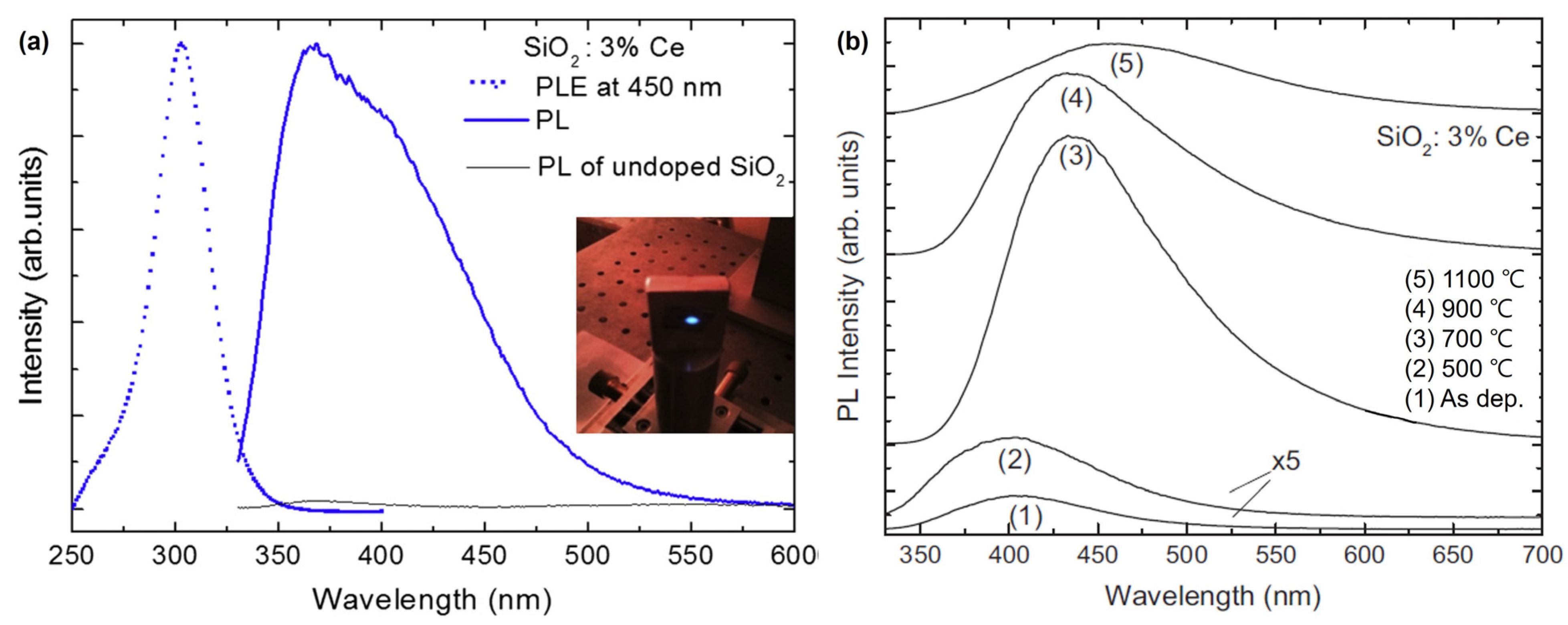

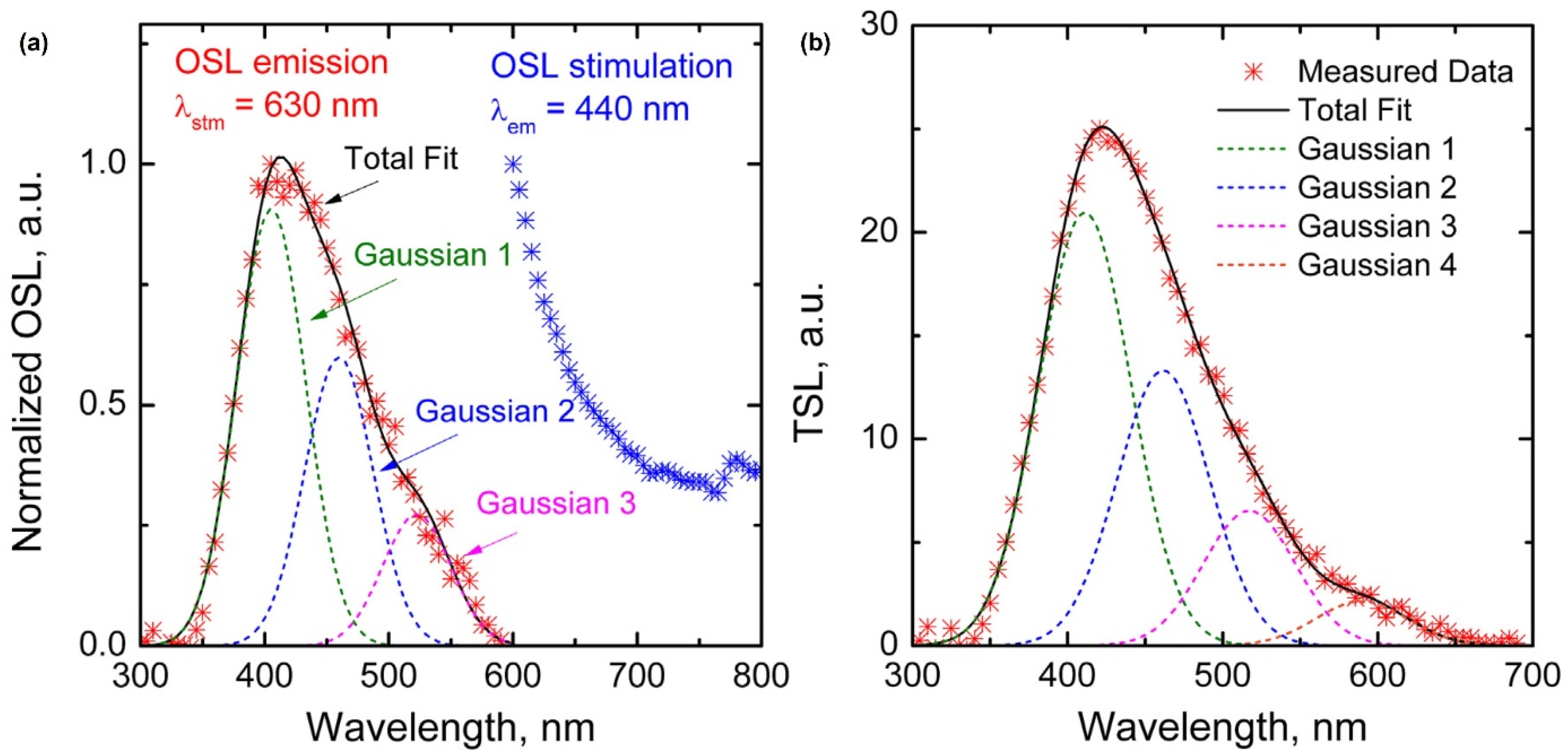

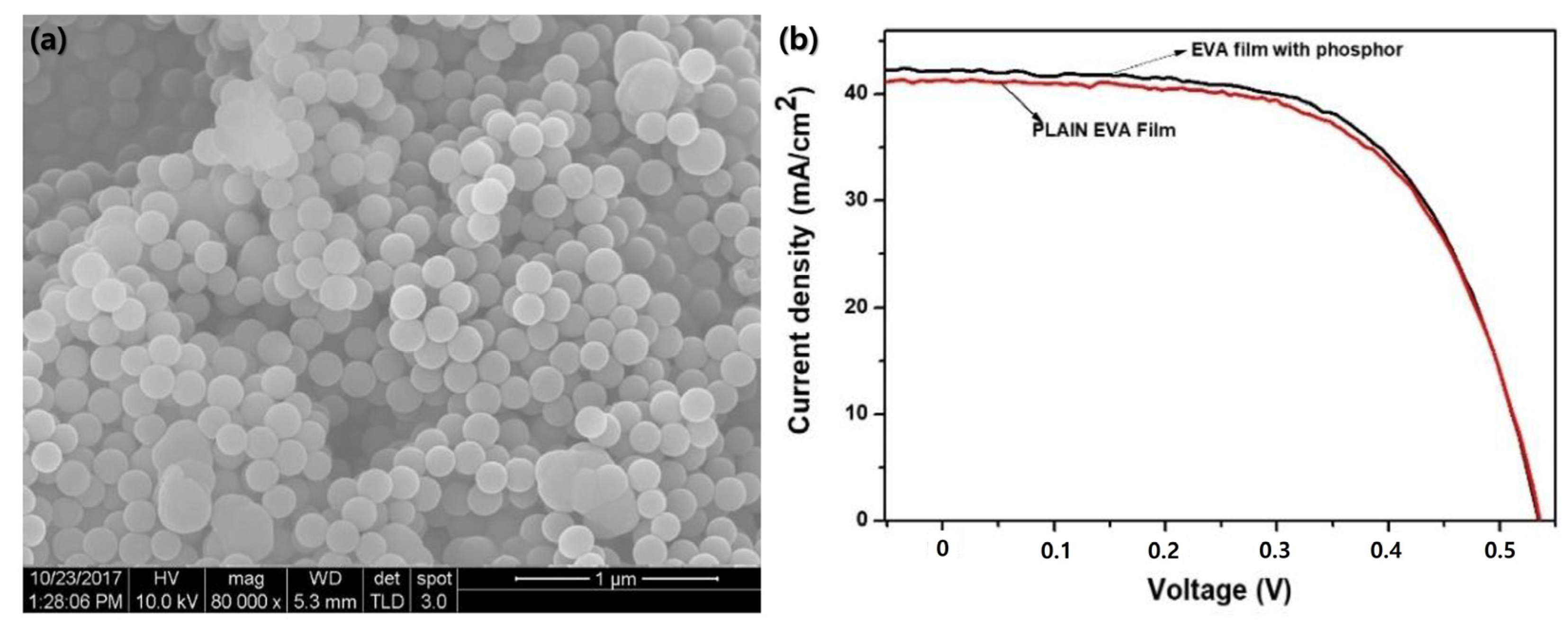

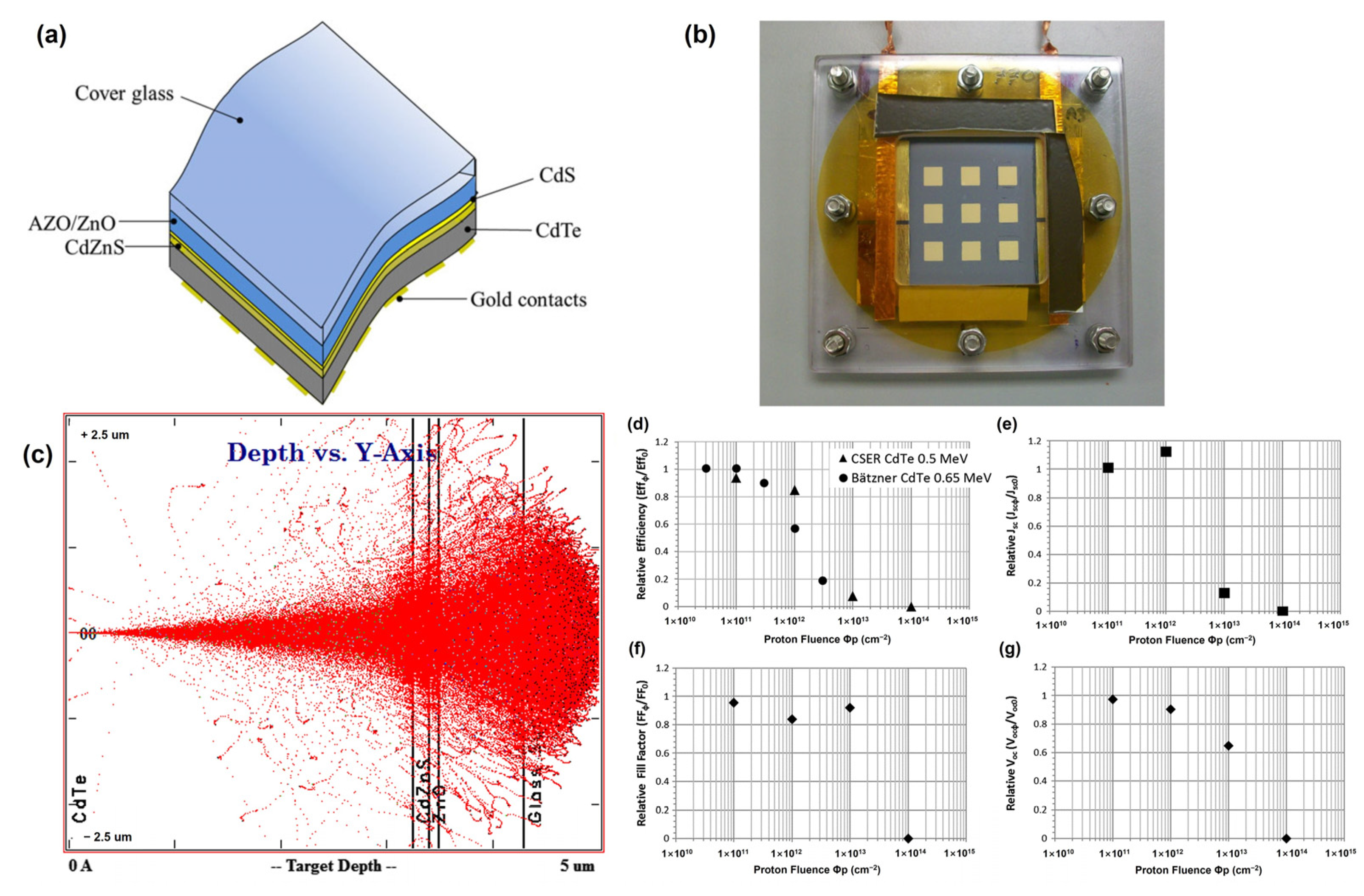
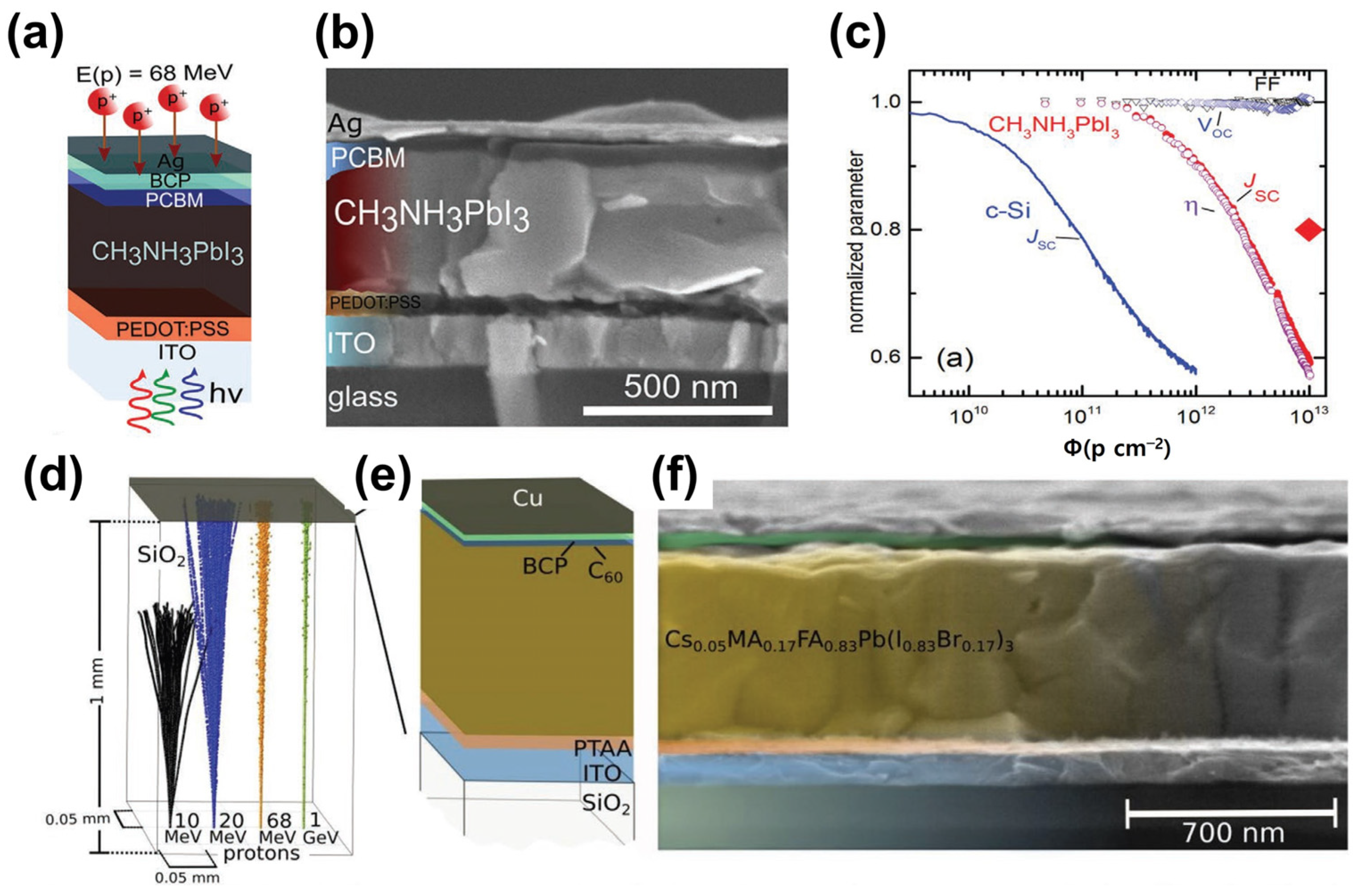
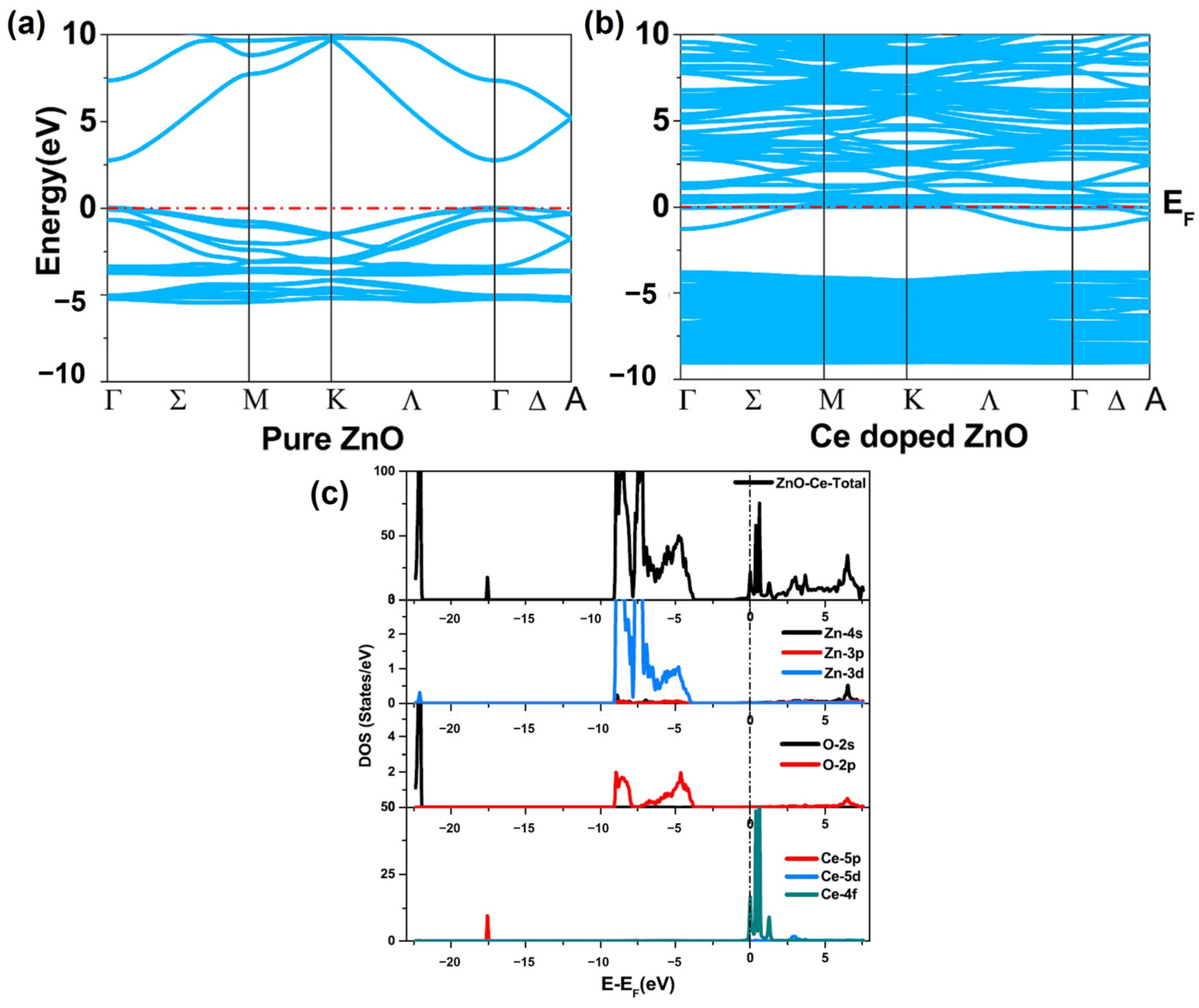
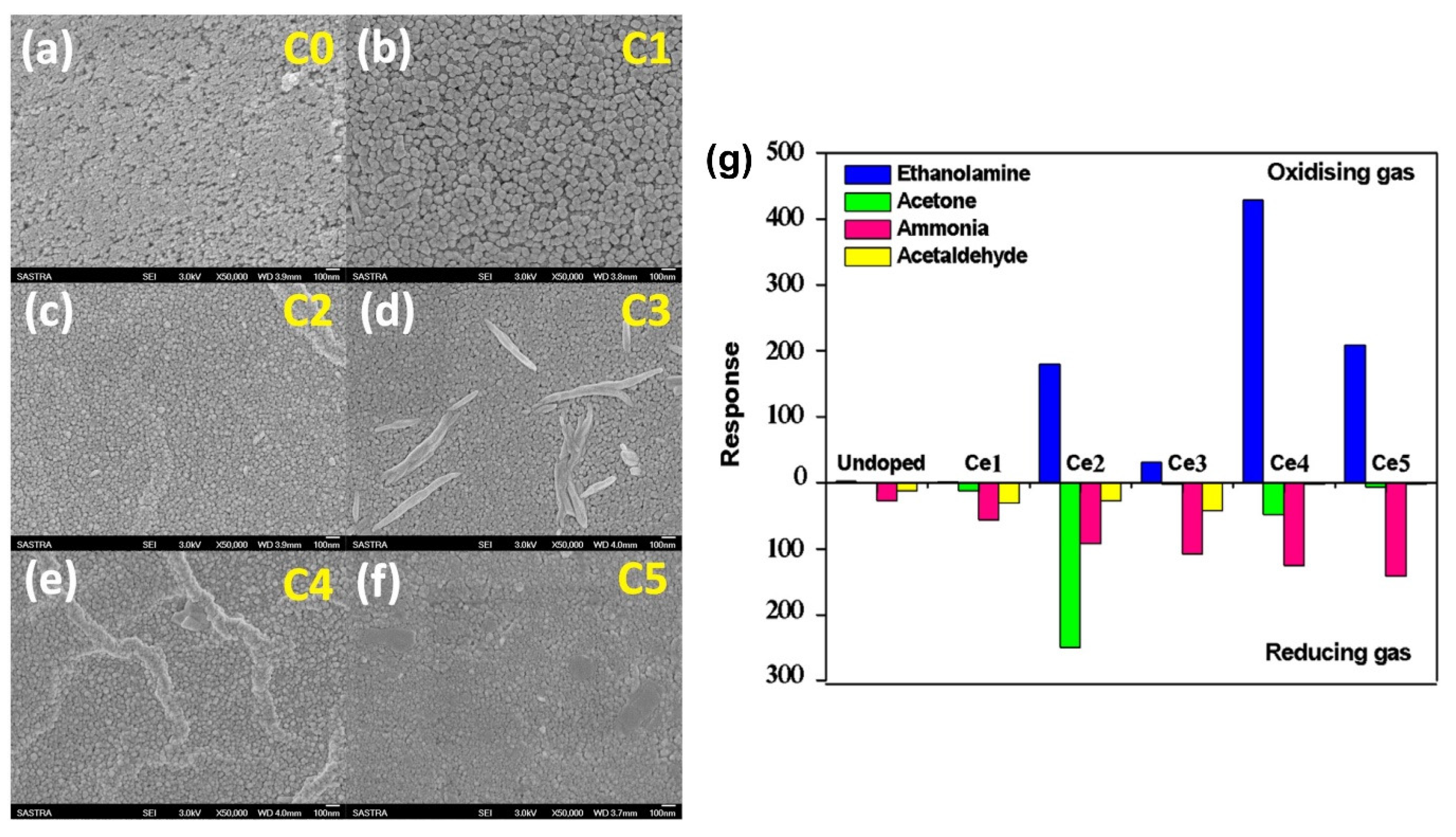


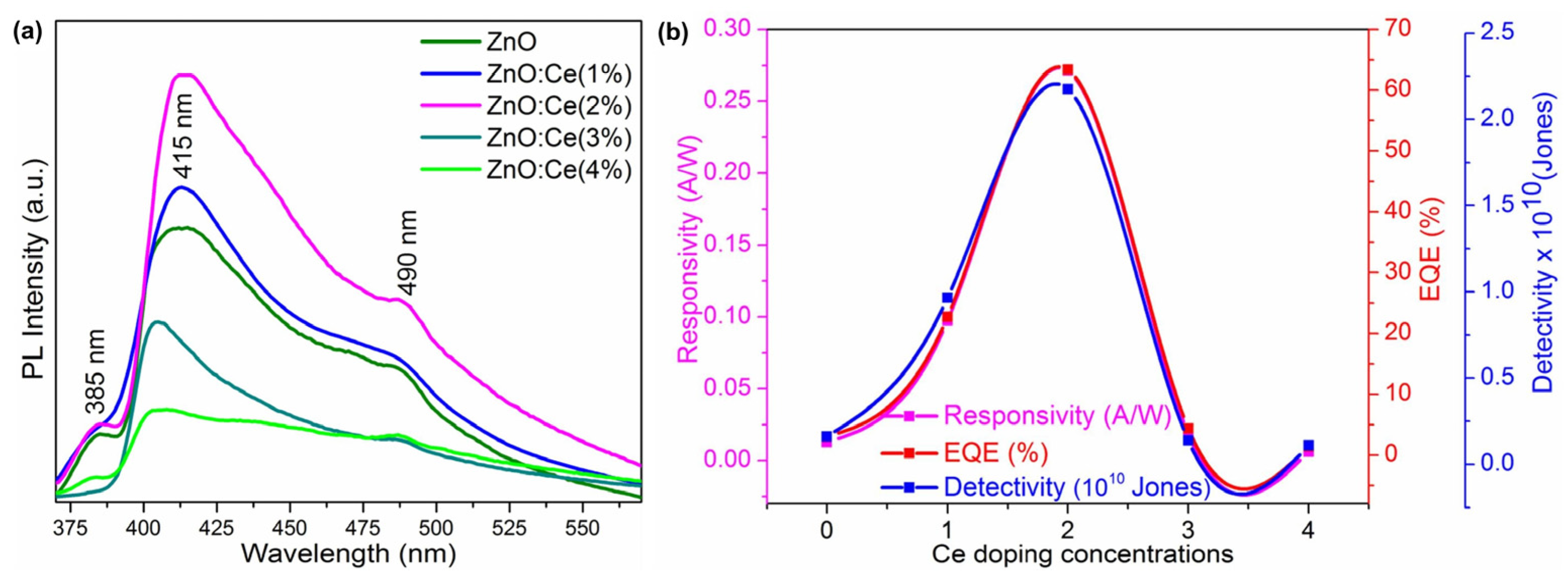
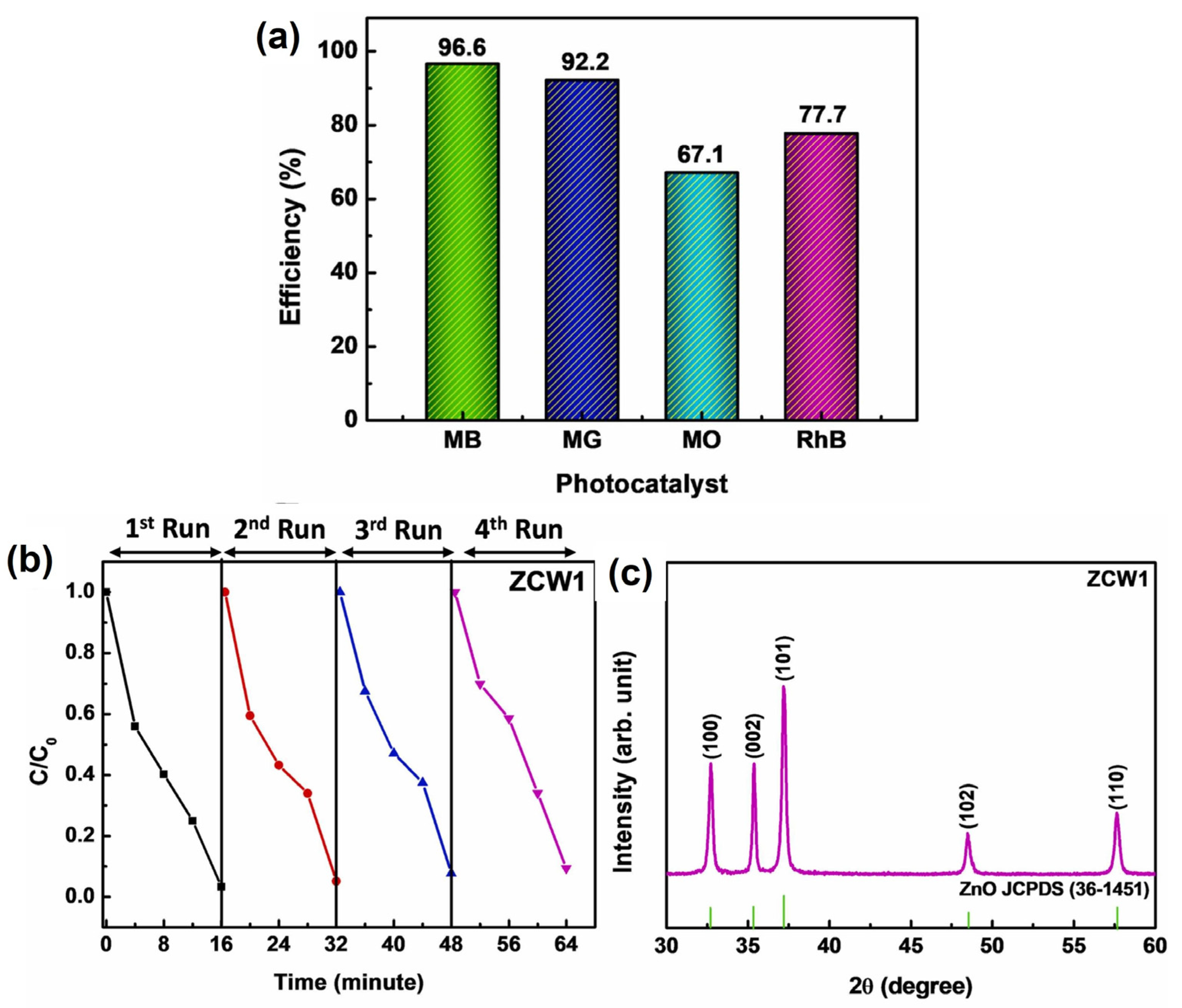
| Materials | Applications | Purpose | Results | Fabrication Method | Ref. |
|---|---|---|---|---|---|
| Ce doped SiO2 | Optoelectronic | Tuning of optical properties | strong blue luminescence at room temperature | Co-evaporation | [31] |
| luminescence characteristics | vigorous luminous intensity and reasonably high transmittance (80% at 527 nm) | Melt quenching | [32] | ||
| a strong band emission in the UV-blue range due to Mie scattering | spark plasma sintering | [35] | |||
| Biomedical | chemical durability and antioxidant capabilities | a decrease in growth rate of HA and protection against the H2O2 stress | Sol-gel | [39] | |
| Photovoltaic | Improvement of solar cell efficiency | 2.39% efficiency increase in the c-Si solar cell applied to the EVA | Strober method | [47] | |
| proton radiation protection | 5% relative efficiency decrease in the solar cells at a proton fluence of 1012cm−2 | Commercial product | [50] | ||
| Ce doped ZnO | Principle | Analysis of optoelectronic and magnetic properties | Identification of changes in the optoelectronic and magnetic properties of ZnO due to the presence of 4f electrons originating from rare earth element doping | Simulation | [64] |
| Gas sensor | acetone and ethanolamine sensing | acetone response (S = 252 for 500 ppm) ethanolamine response (S = 1850 for 500 ppm) | spray pyrolysis | [65] | |
| aniline sensing | aniline response (S = 15.1 for 100 ppm) | hydrothermal | [66] | ||
| electrocatalytic CO2 reduction to CO | current density of 24 mA cm−2 and Faradaic efficiency of 88% for CO at −1.0 V versus RHE | hydrothermal | [67] | ||
| Optoelectronic | UV detection | UV responsivity: 0.27 A/W; detectivity: 63%; EQE: 2.18 × 1010 Jones. | Spray pyrolysis | [73] | |
| Water treatment | removal of various organic dyes | Improvement in decomposition efficiencies in removal of various organic dyes | thermal decomposition | [79] |
Disclaimer/Publisher’s Note: The statements, opinions and data contained in all publications are solely those of the individual author(s) and contributor(s) and not of MDPI and/or the editor(s). MDPI and/or the editor(s) disclaim responsibility for any injury to people or property resulting from any ideas, methods, instructions or products referred to in the content. |
© 2023 by the authors. Licensee MDPI, Basel, Switzerland. This article is an open access article distributed under the terms and conditions of the Creative Commons Attribution (CC BY) license (https://creativecommons.org/licenses/by/4.0/).
Share and Cite
Kim, S.; Choi, M.; Park, J. Cerium-Doped Oxide-Based Materials for Energy and Environmental Applications. Crystals 2023, 13, 1631. https://doi.org/10.3390/cryst13121631
Kim S, Choi M, Park J. Cerium-Doped Oxide-Based Materials for Energy and Environmental Applications. Crystals. 2023; 13(12):1631. https://doi.org/10.3390/cryst13121631
Chicago/Turabian StyleKim, Suhwan, Minho Choi, and Jongsung Park. 2023. "Cerium-Doped Oxide-Based Materials for Energy and Environmental Applications" Crystals 13, no. 12: 1631. https://doi.org/10.3390/cryst13121631
APA StyleKim, S., Choi, M., & Park, J. (2023). Cerium-Doped Oxide-Based Materials for Energy and Environmental Applications. Crystals, 13(12), 1631. https://doi.org/10.3390/cryst13121631








